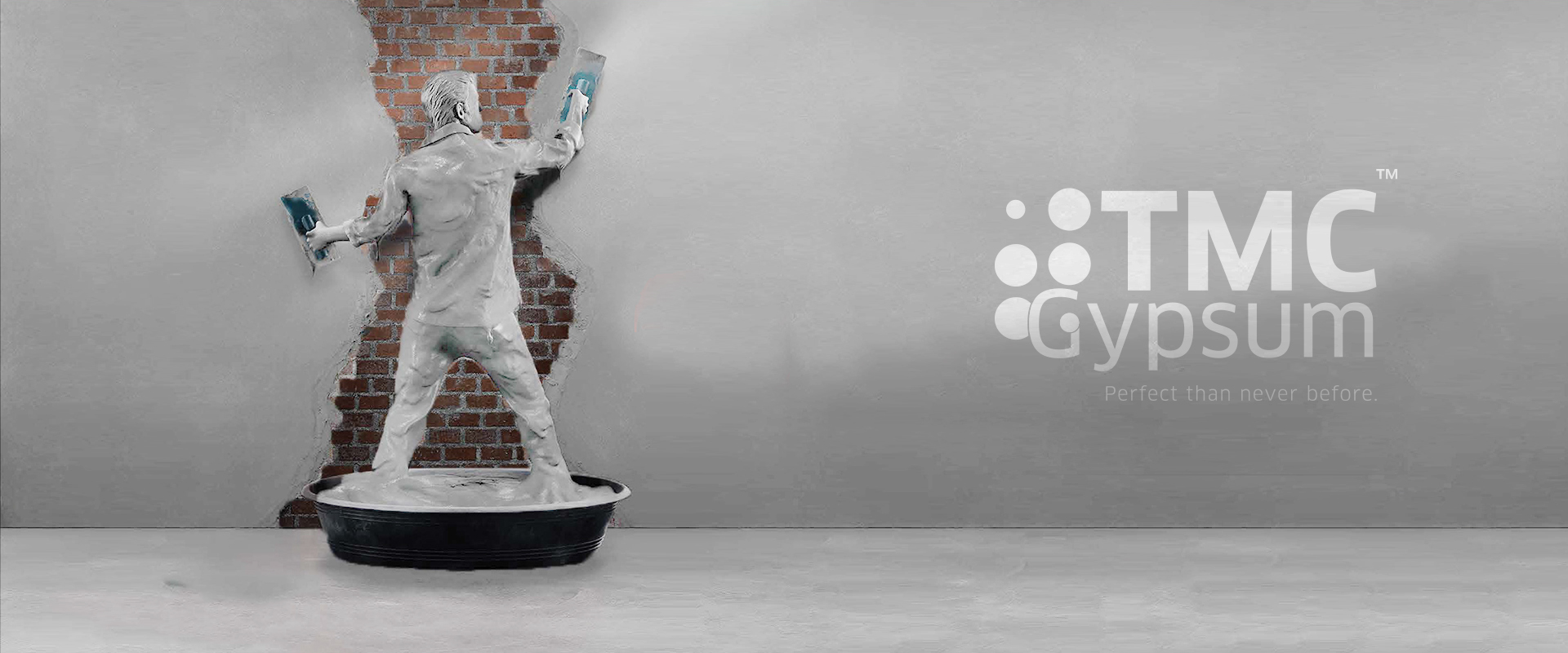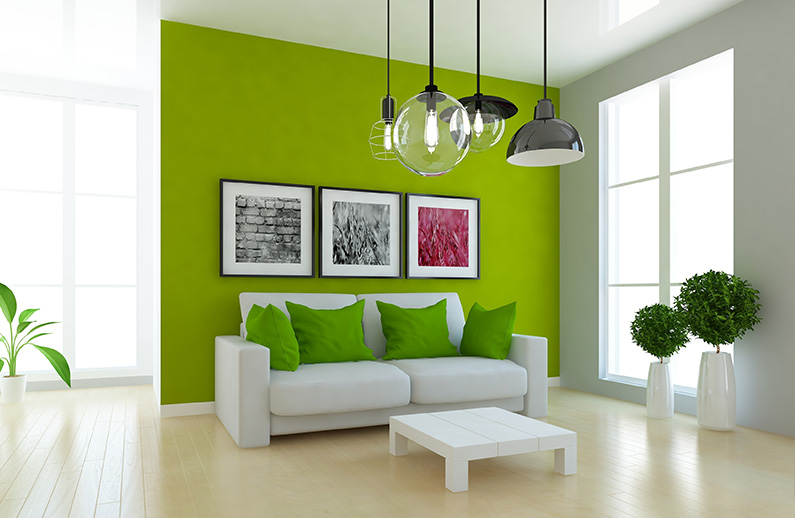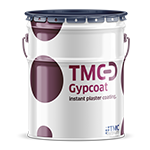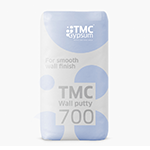
Gypsum Plastering
Gypsum plastering is a modern day solution to time consuming and ecologically straining process of Sand Cement plaster. Further it saves on POP punning cost which is generally applied on Sand Cement plaster. Gypsum plasters have been used for centuries in the construction space, owing to its excellent and unique properties. It provides excellent thermal and acoustic properties while providing undulation free line and leveled walls with superior finish.

Benefits of Gypsum Plastering Over Sand Cement Plaster
Faster Construction
Sand Cement plaster requires 28 days of water curing and then the surface is smoothened with POP punning which again requires time. With Gypsum plaster you finish your walls and the surface is paint ready within 3 days (days required for complete drying)
Reduced dependency on River Sand
Gypsum plaster comes in ready to use bags. Just add water and you are good to go. River sand mining is environmentally harmful and thus banned in many states. Gypsum plaster provides you with best alternative to usage of river sand for all your internal plastering applications.
Water Curing
Sand Cement plaster requires water for curing of the tune of 0.6 kg/m2/day. So supposing a project of 1,00,000 sq-m you require water of tune of 60000 liters daily. And given that minimum curing time of Sand Cement plaster is 28 days, the quantity multiplies manifold. Gypsum plaster gives you freedom from water curing thus saving your cost as well as environment
Shrinkage Cracks Elimination
Shrinkage cracks are a major problem in Sand Cement plaster which is caused due to high heat of hydration and improper curing. Gypsum plaster doesn’t have these problems and hence the walls are free from shrinkage cracks.
GRIHA Certified and LEED points benefit
TMC plaster products are GRIHA certified which helps in easy certification from government agencies. Usage of TMC plasters at sites also helps in contributing towards 27 LEED points.
Lighter Building Construction
Density of Gypsum plaster (700 kg/m3) is more than 50% less as compared to traditional Sand cement plaster (1860 kg/m3). Hence usage of Gypsum plaster for wall plastering decreases the structural load on the building.
Reduced Electricity Bills
Our plasters have low thermal conductivity (0.25 W/m-K) as compared to Sand Cement Plaster (0.72 W/m-K). It helps in keeping your houses cool in summer and hot in winters which in turn save energy cost.
Plastering Solutions
Gypcot
Started as a replacement of hacking at construction sites, today TMC BOND-it has become an integral part of Gypsum plastering application. TMC BOND-it doubles the strength between plaster and RCC surface with the help of its unique chemical as well as mechanical bonding. Advantages: TMC BOND-it is a complete replacement of hacking. One coat of TMC BOND-it gives you freedom from time consuming and labor intensive hacking process while protecting your concrete from weakening due to unwanted damages Click here for more details:
TMC Gypsum Powder
A much better alternative to Sand Cement plaster for internal lining application, TMC One Coat plasters provides you the perfect lined and leveled surface thus eliminating the need of POP punning. Thus use of TMC plaster saves on both time and money.
Advantages:
 Plaster for every need: faster working, moisture resistant, punning, fast setting
Plaster for every need: faster working, moisture resistant, punning, fast setting
 Tried and tested for consistent quality; Each batch is QC checked
Tried and tested for consistent quality; Each batch is QC checked
 Helps in contributing towards LEED points; GRIHA certified productClick here for more details:
Helps in contributing towards LEED points; GRIHA certified productClick here for more details:
Plastering FAQs
What is the cost of one coat plaster compared to sand plaster + pop application
The cost of one coat plaster is almost the same as sand cement plaster + pop application, however product being freight sensitive the equation may change if the material is being dispatched to far-off locations.
How does TMC Plasters behave in moisture?
When a roof or the external plaster leaks or water pipe break, the wetting of the plaster has no harmful effect, if the plaster area affected can dry out rapidly. Repeated wetting will keep the surface damp, till the plastering area is dried out.
To avoid moisture seepage from the ground, apply TMC Plasters on walls to 4” to 6” above the skirting level. Do not apply TMC Plasters on the surfaces when they are exposed to weather. Water flow does not affect the Plaster strength, but it may cause the Gypsum plaster to create stains.
What is the recommended thickness for the application of TMC Plasters?
TMC Plasters can be applied approximately 6mm to 25 mm in thickness measured from the face of the backing. Gyproc Plasters for higher thickness should be applied in two or more layers (15mm each) without any time interval.
Upon what bases may TMC Plasters be applied?
TMC Plasters can be applied directly to brick walls, concrete blocks, or RCC surfaces. The RCC surfaces should be hacked or use of a Bonding agent is recommended. The surfaces should not have paint, oil, dust, dirt or any other material that might prevent the development of proper bond.
What is TMC One Coat Plasters?
TMC One Coat Plaster is a brand name of Gypsum Range of Products manufactured by Saint Gobain India Pvt. Ltd.
It is manufactured by heating the prepared raw gypsum. Heating the raw gypsum forces a chemical reaction in the gypsum to change it from dihydrate, CaSO4. 2H2O, to hemi-hydrate, CaSO4.½H2O, by driving off 1½ of the molecules of water, known as the ‘water of crystallization’. Certain additives are added to CaSO4.½H2O to reduce its Bulk Density, delay the setting time, to arrest the shrinkage cracks & to improve the bonding strength, durability, Insulation value, fire resistance.









